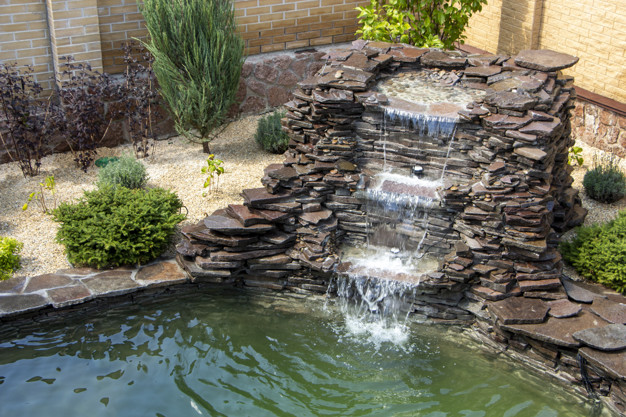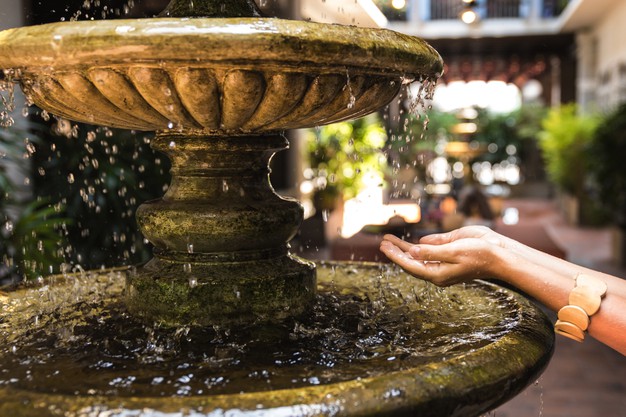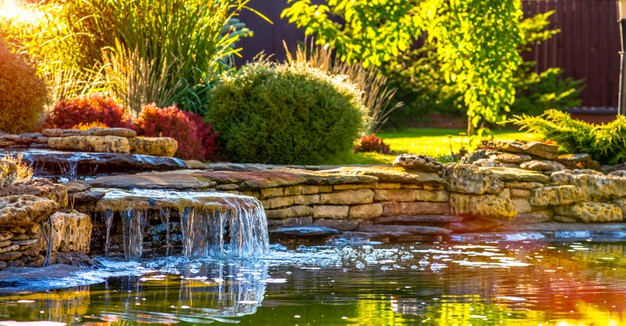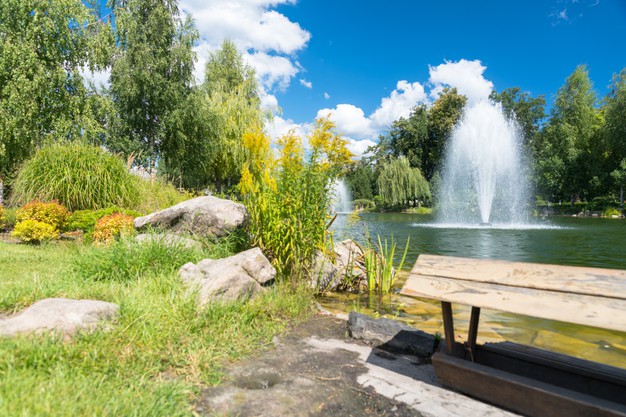
One of the hardest parts of having a variety of outdoor features in your backyard is maintaining them. Whether it is your patio, outdoor kitchen, or garden, it would be challenging to undergo each process of maintaining them. But the most difficult outdoor decoration that needs high maintenance is an outdoor water fountain.
Outdoor fountains could be excellent as they enhance the design of your house with minimal effort. But the maintenance of this item is much more complicated when it is created for outdoor decoration.
They are prone to various elements such as dirt, wind, leaves, animals, snow, and rain in their designated environment. So, the Soothing Company has thought to share the basic steps in caring for your outdoor fountains with you.
1. Scrubbing could go a long way

A simple textured cloth, a toothbrush, and a bottle of detergent could remove the dirt in your fountain. This type of cleaning method should be done once every month, but you might want to do it twice or thrice a month, depending on your surroundings.
If your area has many trees, you could expect that tree pollen, leaves, and dirt would be in your outdoor fountain. Hence, you would need to scrub it thoroughly.
Of course, you have to keep in mind the materials that your fountain was made of. You shouldn’t just scrub without any care as there are specific products for maintaining fountains made from marble, for instance.
Using just any detergent would stain or damage its surface, but a special cleaner would prevent this from happening. You should be aware of this when dealing with limestone, travertine, concrete, and Cantera fountains.
In contrast, maintaining a granite fountain is less demanding than the first ones. Using a solution of water and muriatic acid, you’ll be able to remove any calcium scale on its surface. Meanwhile, using a ferrous acid and water solution is excellent for taking off iron stains without scrubbing. Then you would need to generously rinse it with water to get them the sparkling clean image of your fountain.
2. Maintain your water level

A high water level could be disastrous for you as this could cause overflowing, yet putting your fountain in a low water level could lead it to dry from pump damage or fountain failures.
To make it function properly, you should regularly maintain its water level, especially if you live in a hot climate. It’s also suggested that you refill the water from the fountain every day if it doesn’t have an auto-fill in it.
Moreover, you must change the water from the fountain every month with fresh water then alternate it with an algae cleaner.
As you remove the water, you should clean the pump and submerge it in a solution of ⅓ vinegar and ⅔ water. Run it for 15 minutes before scrubbing it with a toothbrush to remove the calcium scale, if needed.
Aside from this, we recommend that you take out the pump impeller, making sure not to lose any small parts, and cleaning the chamber.
3. Prevent algae from occurring

Algae are tough to remove; thus, they could ruin the fountain’s water pump, giving off a foul odor. Not only that, but it also clogs the auto-fill, causing the fountain to flood.
A monthly regulation of algae using an anti-algae cleaner would kill the remaining organisms on its surface.
The best cure for algae occurrence is to avoid placing the fountain where direct sunlight could reach it as it promotes faster growth of algae. A partial or complete shade would be able to prevent this incident, along with keeping as much water as you can because of its cooling property that could then slow down the algae growth.
If there were some damage in your fountain, it’d be best to call on an expert to assist you by reaching out directly to the store you purchased the product from or calling a trustworthy individual experienced with this kind of work.
4. Always check your fountain pump

The fountain pump is the most vital part of your outdoor water fountain, so be sure to take good care of it and maintain it properly. No matter what type your outdoor water fountain is or how expensive they are, it will not work if they have a poorly maintained fountain pump. If the fountain pump is weakened due to the algae and specks of dust, the water’s movement in your fountain will decrease. Suitable pumps you can find at www.livingwateraeration.com/collections/pond-pumps.
If you don’t have any idea about taking good care of your fountain pump, you might as well research some information right now. You should know that outdoor fountain pumps are defenseless against getting clogged from external pollution, such as from the debris from its surrounding. If this happens, your water fountain might not function properly yet still uses a lot of electricity. This is why it is essential to keep an eye on your fountain pump all the time. Get rid of the dirt, grass, fallen leaves, and stones immediately.
You also have to adjust the noise level of your water fountain if it splashes too much. A loud water fountain means that the water being pumped is too strong.
5. Remove the white scales immediately

Have you noticed those white residues in your water fountains? Well, those are called white scales, and they are often present in almost every water fountain. This is because white scales result from calcium buildup developed by the hard water of your water fountain.
There are several ways to eradicate these white scales, and one example would be using a dash of white vinegar. The process of eliminating the white residue is simple, and it starts by gently rubbing it with white vinegar. After several rubs, you will then see the white residue get entirely washed away.
The components of white vinegar are strong enough to wash away not only the white scales but also all the free deposits on your outdoor water fountain. If you want to avoid white scales from coming back again, you can purchase products such as White Scale Control or Fountain cleanser to help prevent white scales from building up on your fountain and keeping the water clean.
An outdoor water fountain might be the most outstanding decoration you can place in your outdoor area, but it also needs to be highly maintained. Consider it as an investment and as an asset in your house. You will definitely appreciate its value later on.








